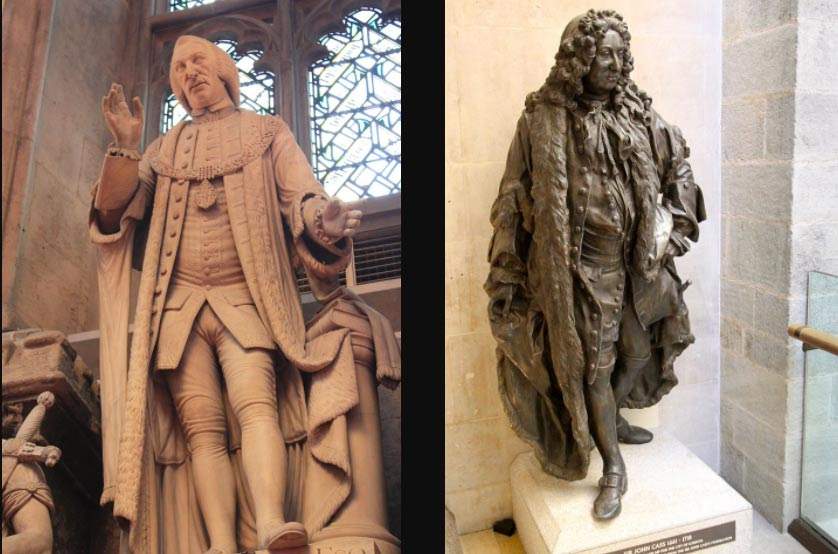London, City Hall removes statues of two figures linked to slavery
In London, statues of two historical figures with slavery-related backgrounds will be removed from the City. This is what the City of London, the administrative district in the heart of the English capital (comparable to Rome’s city halls), has officially announced. It was decided by the City Corporation (i.e., the city council) and the Policy and Resources Committee (the department that determines the allocation of municipal resources). These are statues of William Beckford (Jamaica, 1709 - London, 1770) and John Cass (London, 1661 - 1718), both prominent politicians of their time (Beckford was also twice mayor of London). Beckford was one of the most powerful men in eighteenth-century Britain; he also owned several sugar plantations in America, where some 3,000 black slaves were employed. Cass, before entering Parliament, had set up a thriving business trading with the colonies, and the “goods” he sold included slaves, so much so that his image was in the crosshairs of Black Lives Matter activists during the summer 2020 protests.
The two statues, which are now located inside the Guildhall, the City Hall building in the City, will have two different destinations: that of Beckford, a 1772 work by John Francis Moore (Hanover, 1745 - London 1809), will be relocated (no word yet on where), while that of Cass, a 1751 work by Frenchman Louis-François Roubiliac (Lyon, 1702 - 1762), will be returned to its owner, the Sir John Cass Foundation. Other works will be installed in their place. In addition, the City considered the possibility of erecting a memorial to the slave trade. The decision was recommended to the City administration by the “Tackling Racism” taskforce (established by City Hall last June, in the wake of the Black Lives Matter protests), which deals with issues related to racism, and will be accompanied, the administration always makes known, by actions aimed at protecting diversity.
“The decision,” City Corporation President Catherine McGuinness makes known, “comes after months of valuable work by the Tackling Racism Taskforce, which has taken an all-encompassing approach to addressing injustice and inequality. The members’ view is that removing and relocating statues linked to slavery is an important milestone in our journey toward a more inclusive City devoted to diversity.”
“I’m really pleased,” said Caroline Addy, co-chair of the Tackling Racism Taskforce, “that the Policy and Resources Committee agrees that what we think is the right response to a sensitive problem. The slave trade is a stain on our history, and holding those who benefited from it on a pedestal is something that is not acceptable in a modern city devoted to diversity.” “I am very proud,” echoed her other co-chair, Andrien Meyers, “that the work of the Taskforce has led to the promotion of inclusion at the City Corporation, our schools and institutions, and the City as one.”
Pictured: left is the Beckford statue, right is the John Cass statue (ph. Credit Stephen C. Dickinson / The Wub)
 |
| London, City Hall removes statues of two figures linked to slavery |
Warning: the translation into English of the original Italian article was created using automatic tools. We undertake to review all articles, but we do not guarantee the total absence of inaccuracies in the translation due to the program. You can find the original by clicking on the ITA button. If you find any mistake,please contact us.





























